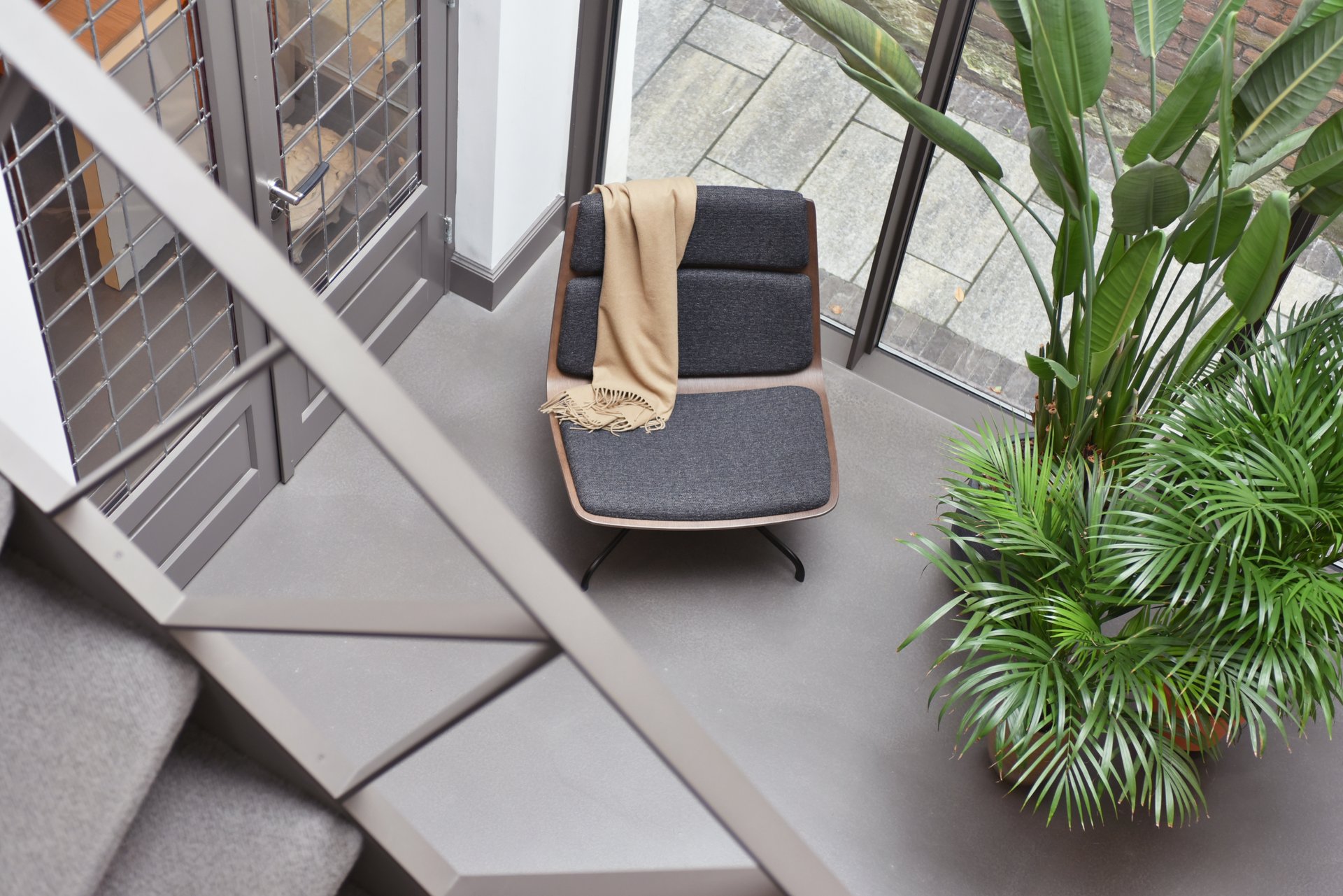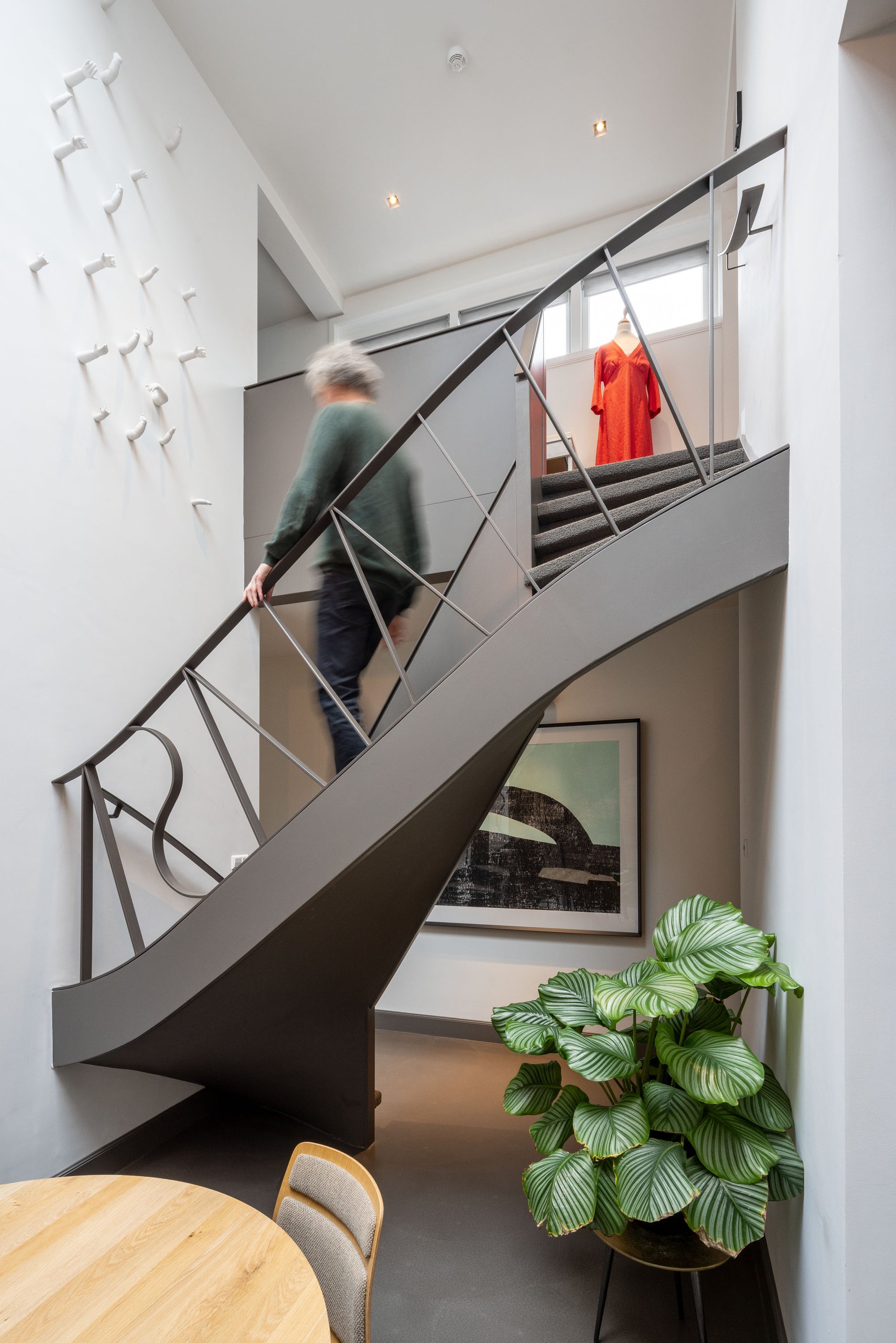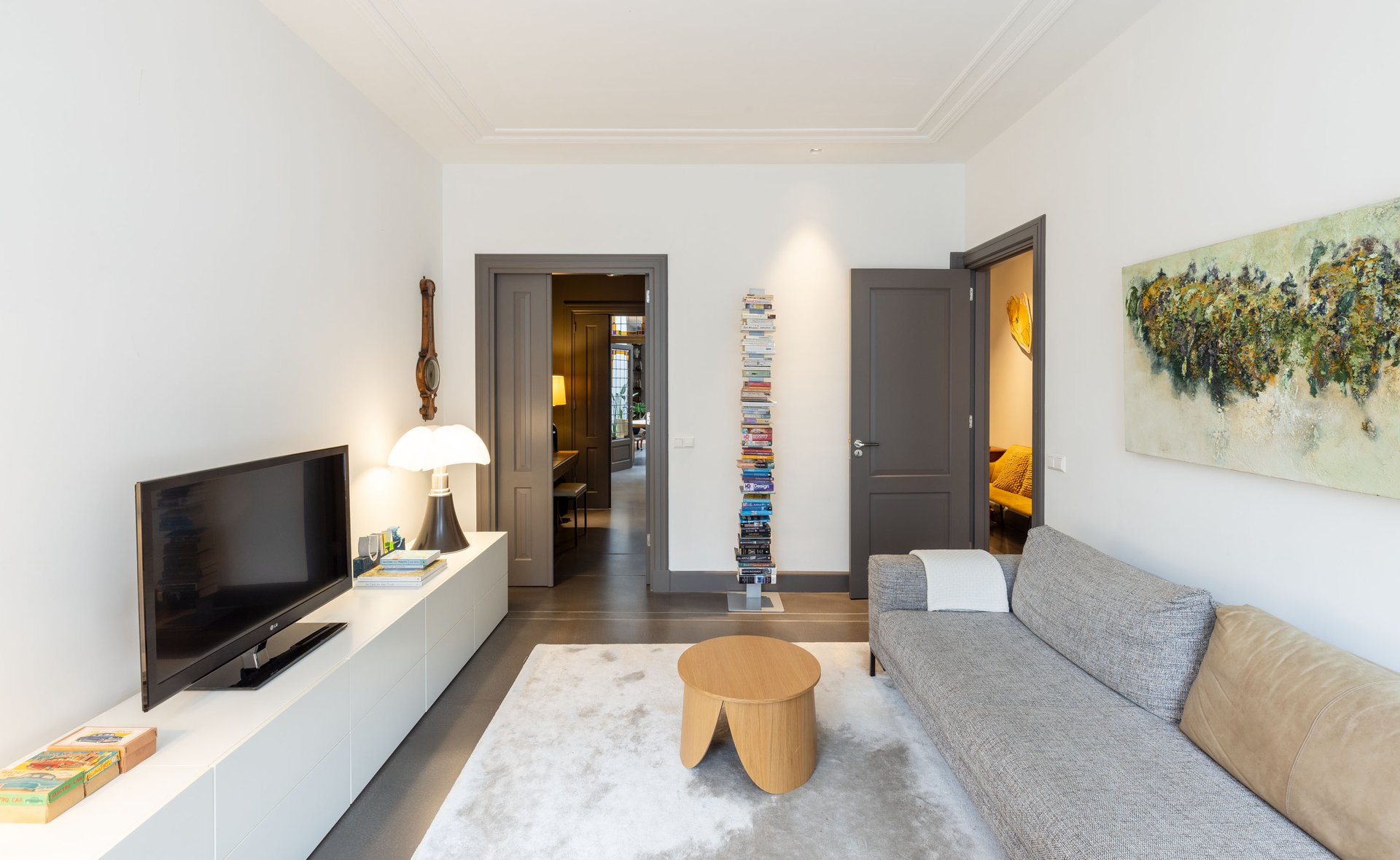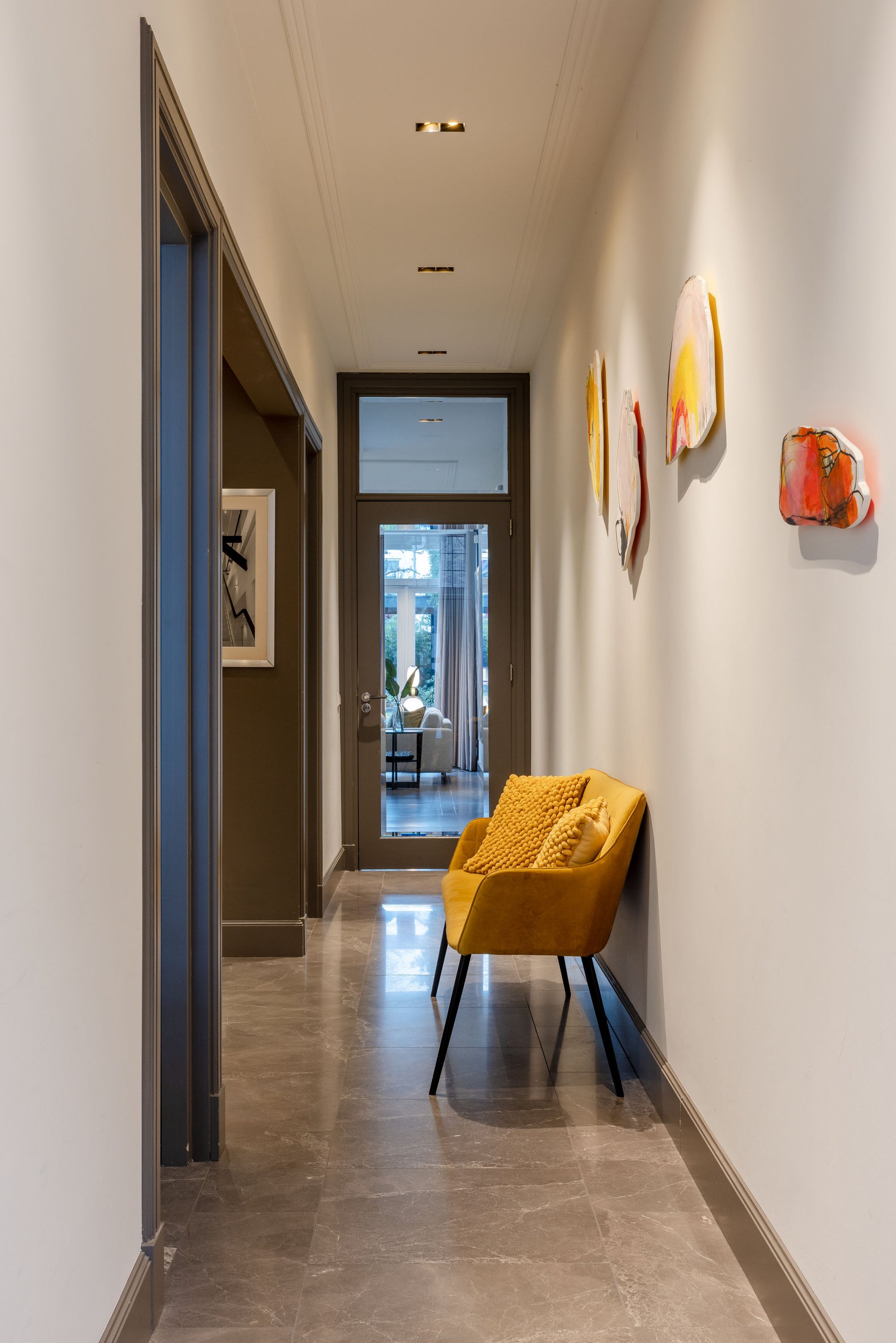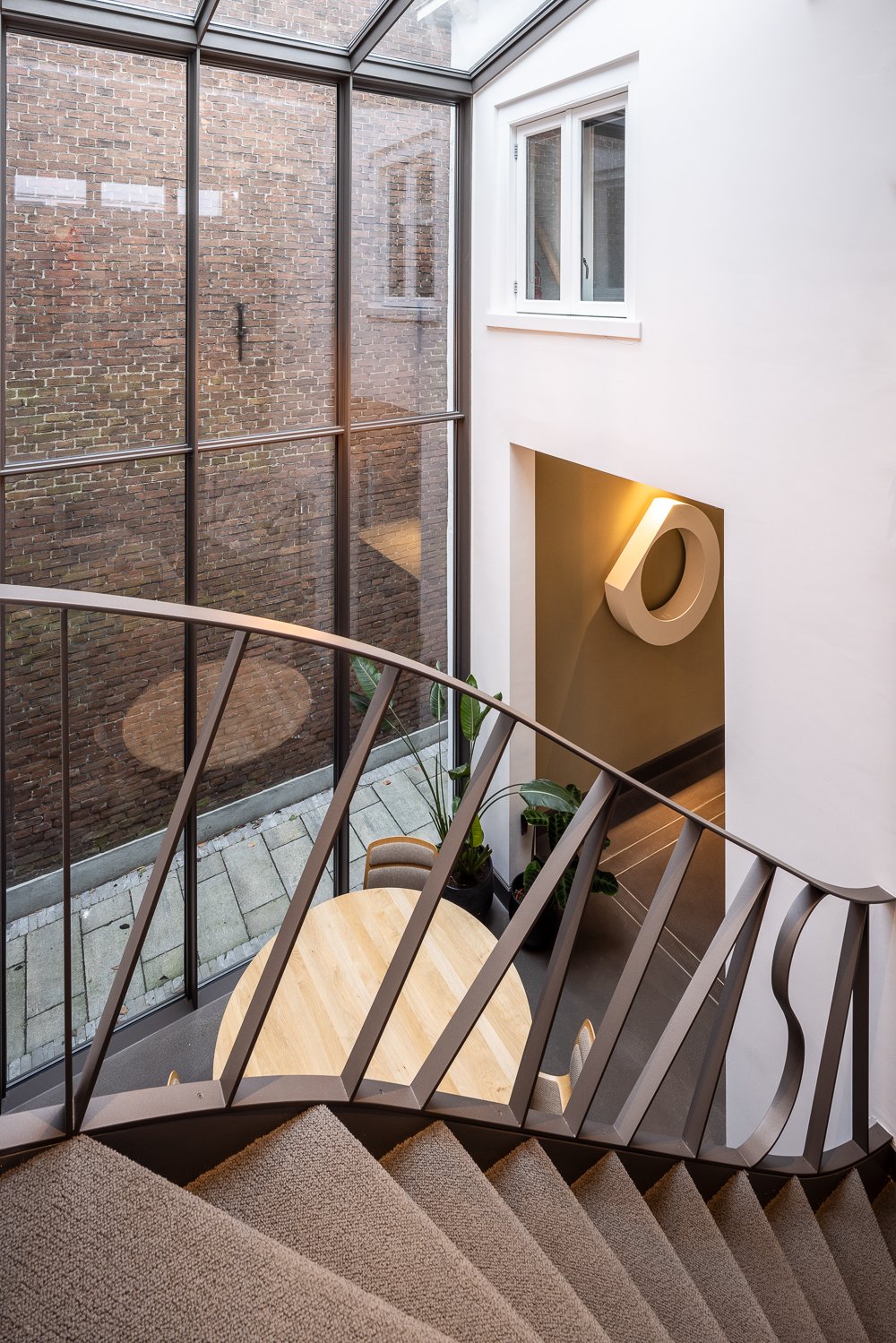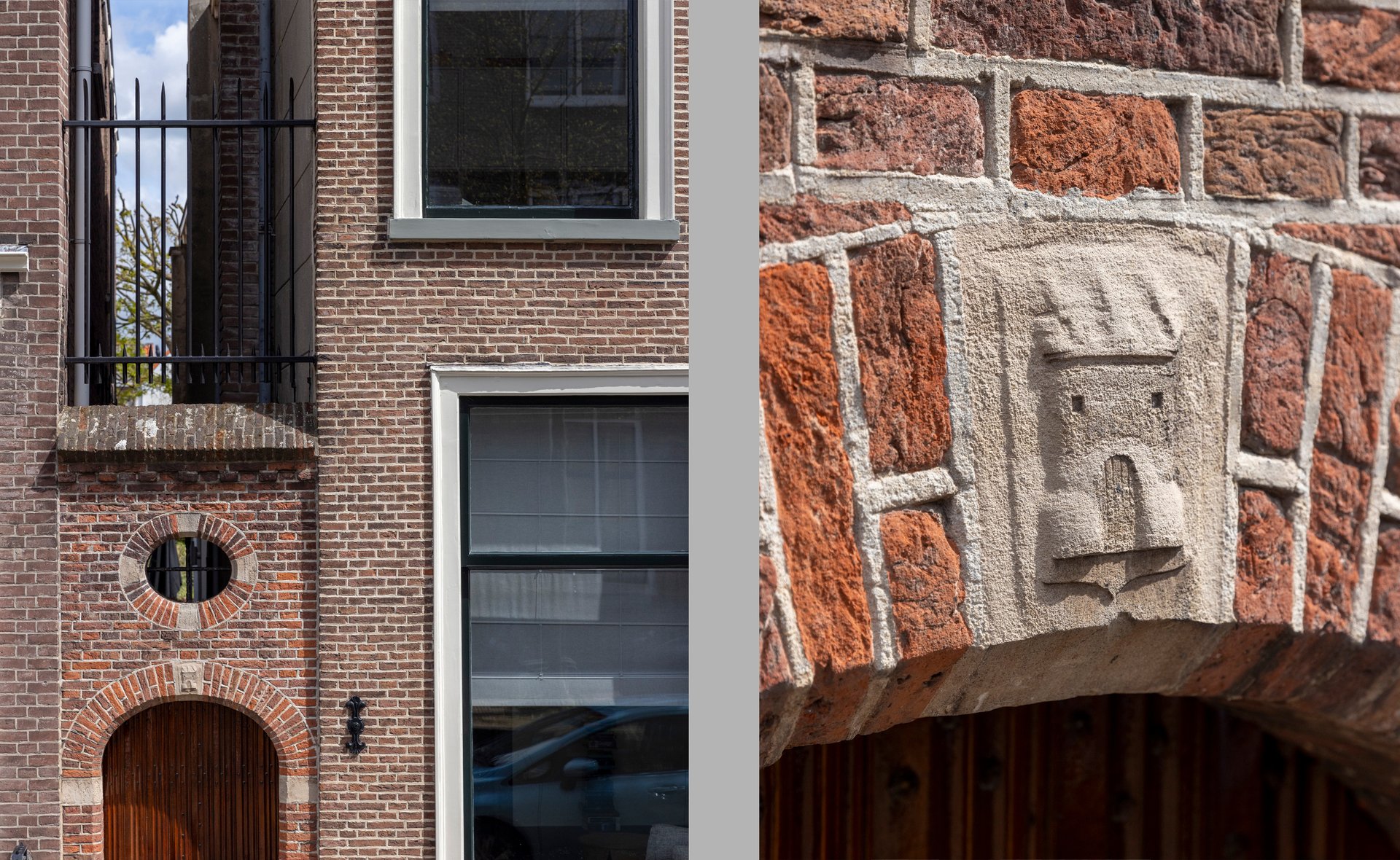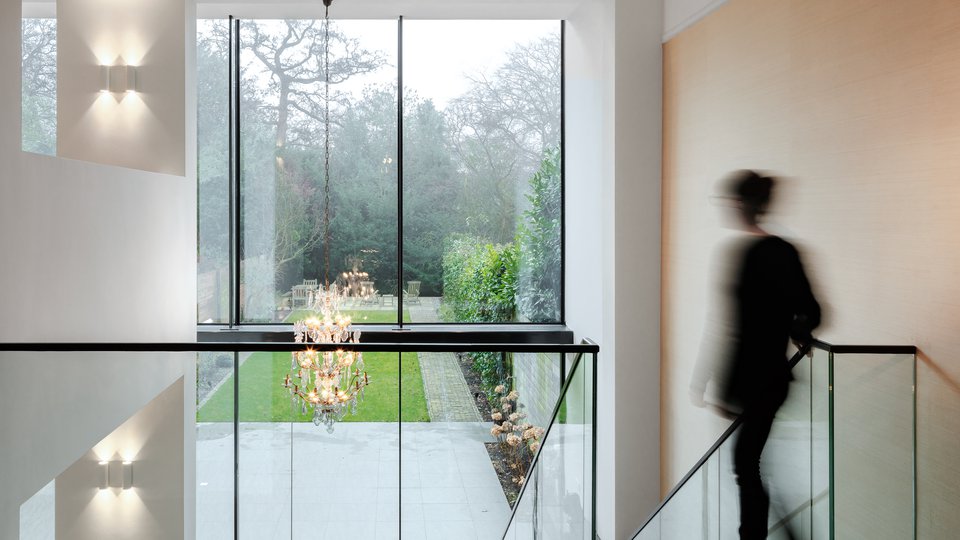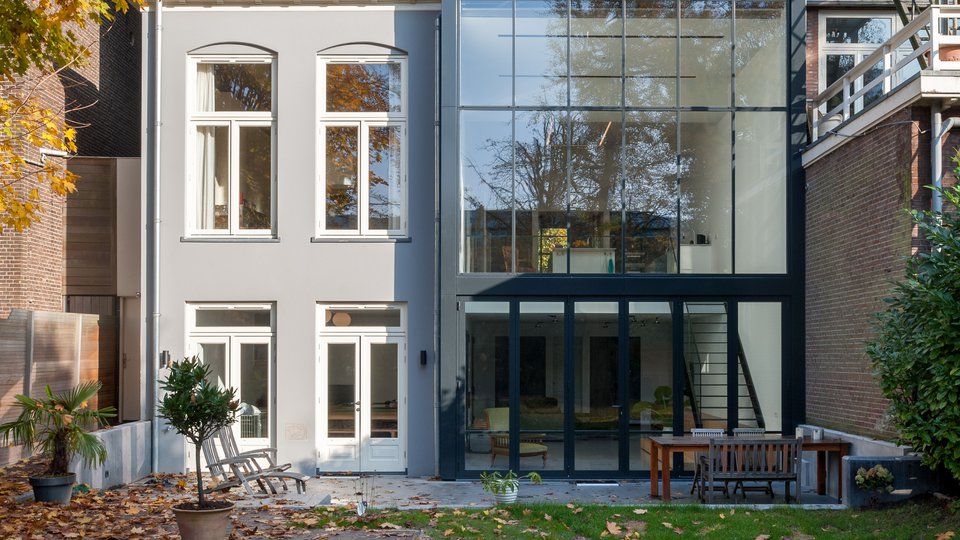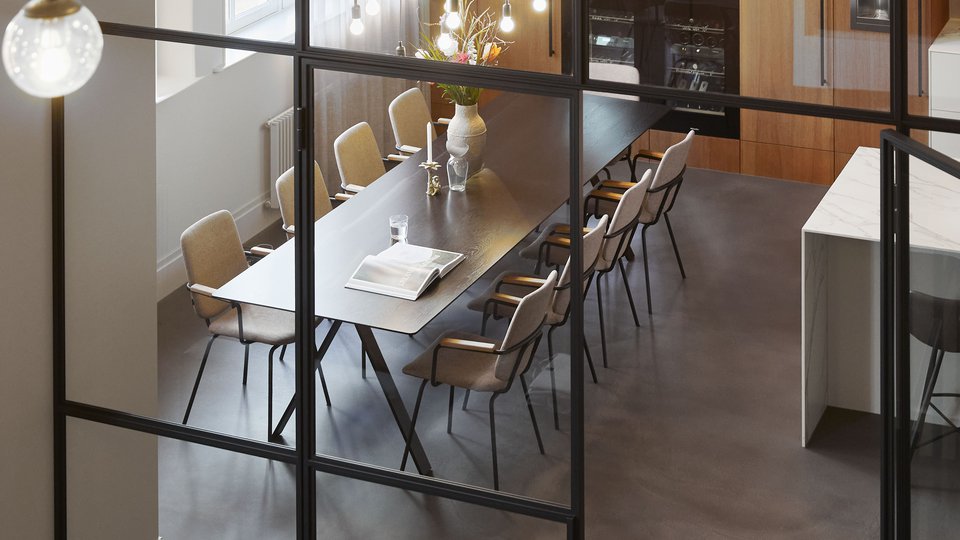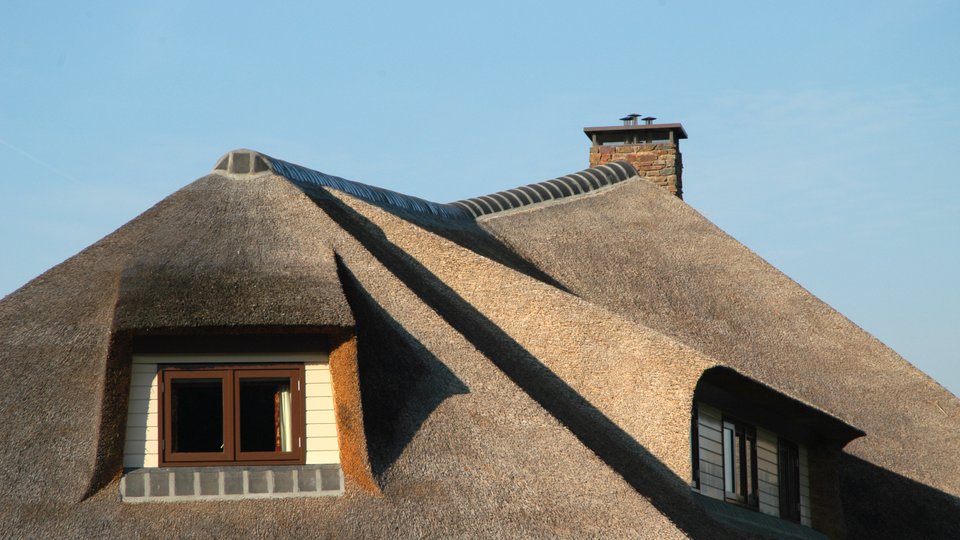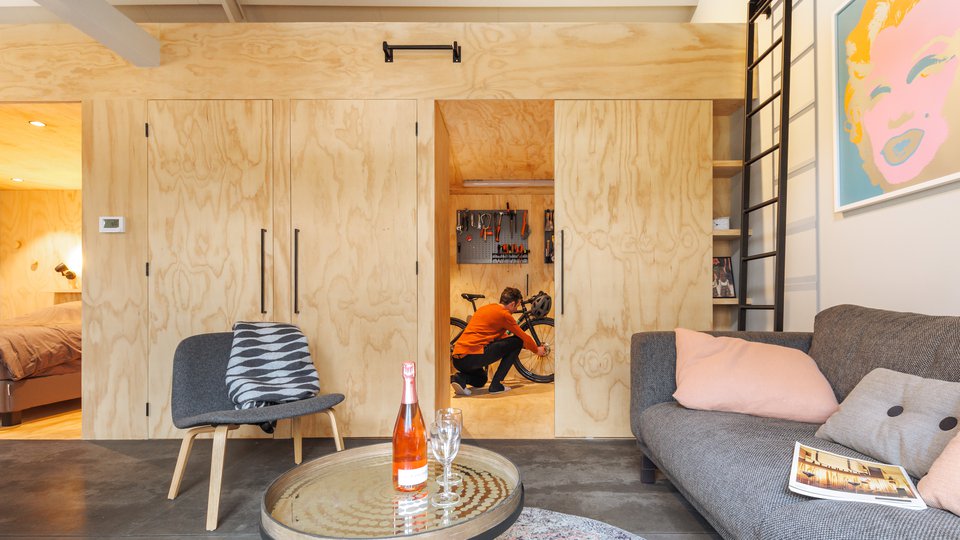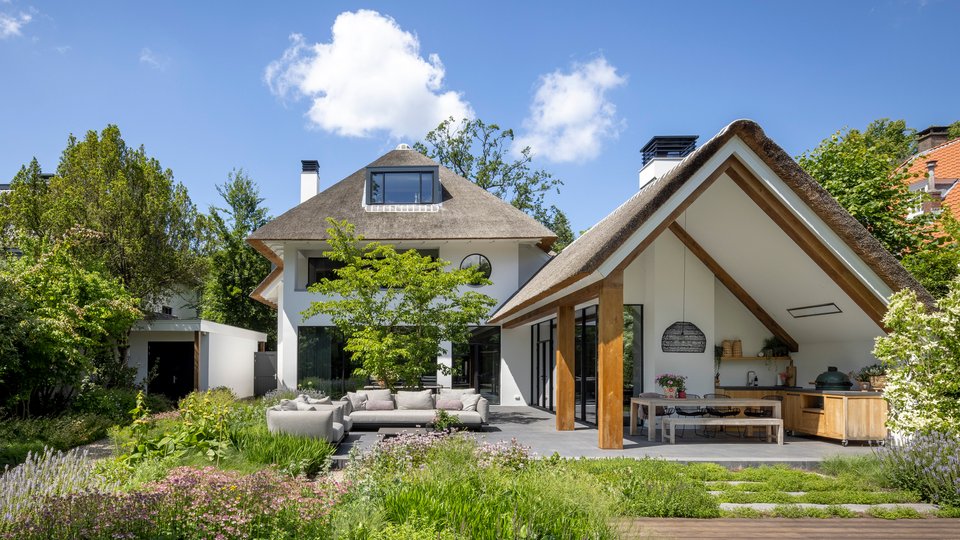| Client | Undisclosed |
| Timeline | October 2015 - February 2017 |
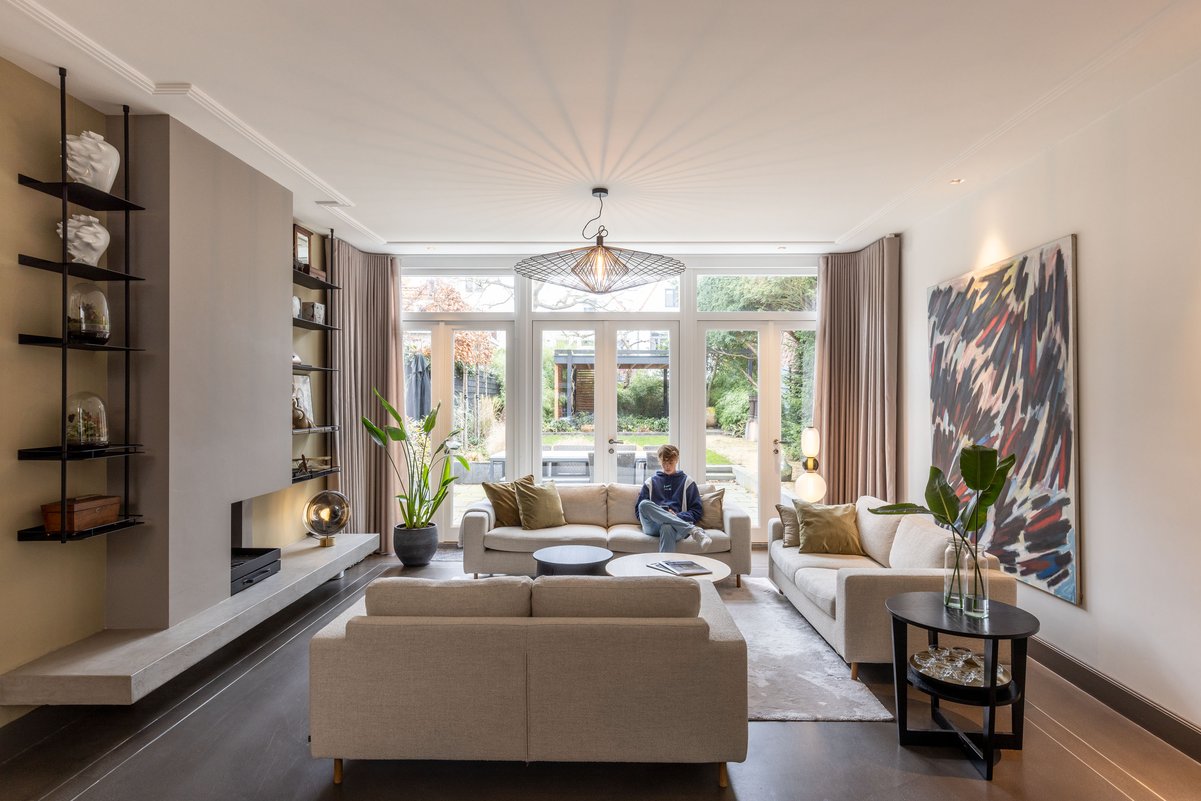
Over the centuries, the house underwent various modifications to accommodate the changing preferences of its inhabitants, leading to the loss of much of its historical value. While the facade maintained its stately appearance with pilasters and decorative elements, the interior had lost its original, monumental charm. The front and back of the house were rigidly compartmentalized, with much of the interior concealed behind dark wooden panels and dark brown tiles, creating a somber and uninviting atmosphere.
With a meticulous focus on lighting design, materiality, and vistas, we managed to transform the look and feel of the house into a luminous and welcoming living environment. While the 20-meter hallway retains its role as a connecting element between the front and rear of the house, we also introduced passages that interlink the adjacent rooms, creating a dynamic and interconnected floor plan with a multitude of sightlines. Despite these connections, the sense of intimacy and privacy within each space remains uncompromised.
Vila Tasa provides a sense of freedom through a sequence of interconnected, monofunctional spaces.
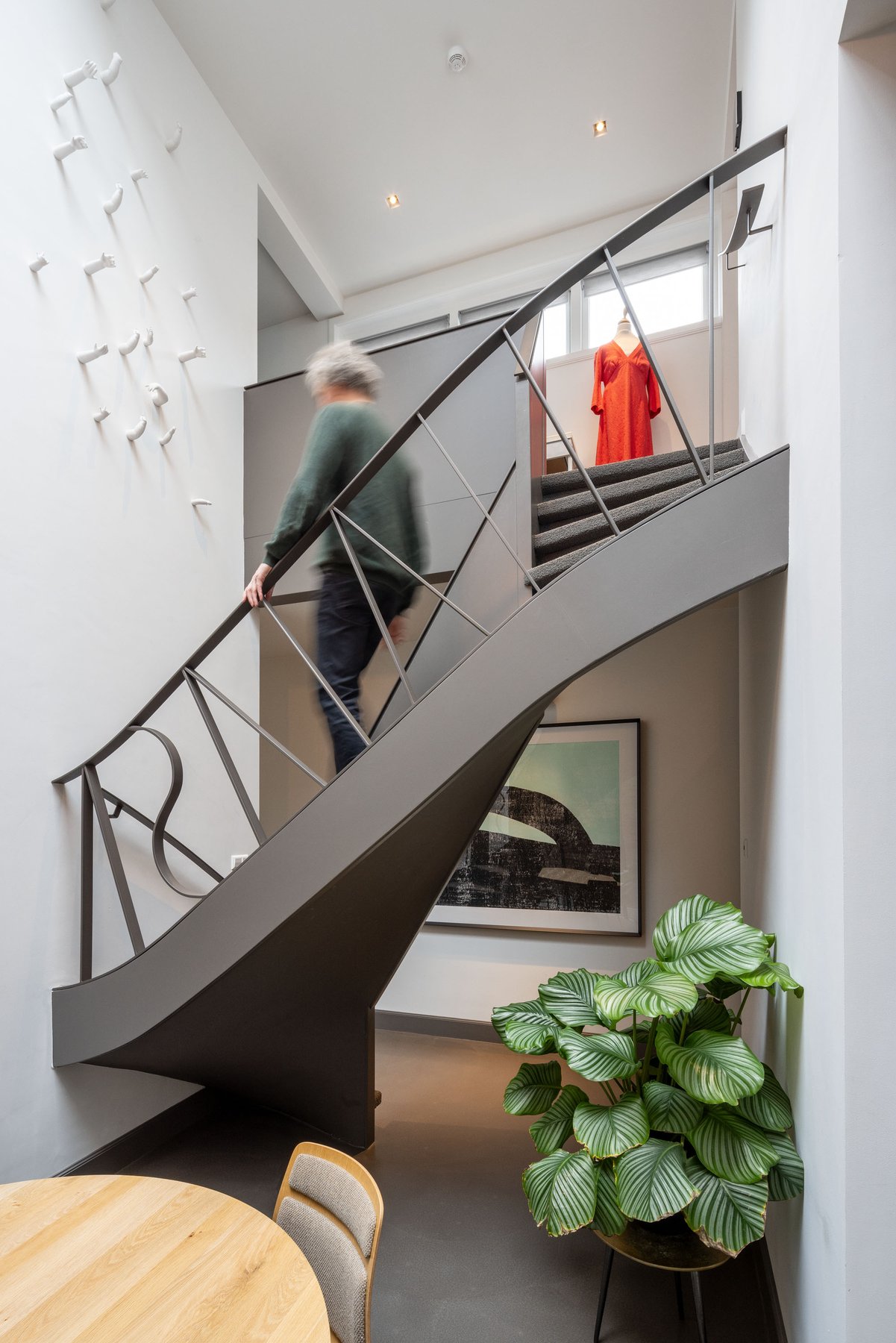
The most significant alteration, however, is the incorporation of a light court right in the middle of the house - a space that not only bridges but also bathes the once separate and quite dark living areas in natural light. This architectural intervention not only amplifies the visual connectivity between spaces but also assumes a pivotal role within the house. The addition of different kinds of artwork in the light court further adds to the very personal living experience within Vila Tasa.
The arrangement of rooms within the house allows its occupants to choose a different space throughout the day. Whether it's warmth, privacy, or comfort you need - each room possesses a unique character. The diversity in the interior design, ranging from comfort-oriented spaces to a music room, provides a variety of options for personal choice and preference.
Through a keen sense of proportion, abstract and modern lines, as well as stucco profiles, were introduced, giving the house a rich aesthetic without imitating what could have historically been there. The custom-designed cabinets in the house draw inspiration from the original stained glass, seamlessly integrating historical references into the modern additions, creating a surprisingly natural and cohesive blend.

This 17th-century canal house embodies a seamless blend of spaciousness with intimacy. Due to a fusion of historical reverence and contemporary ingenuity, Vila Tasa is not just a mere renovation. Each space within this residence offers a bespoke and unique sanctuary, inviting occupants to comfort, warmth, and personal expression. It is a welcoming residence where tradition converges with innovation and breathes new life and personality into centuries-old architecture.
Photography by Lucas van der Wee
Redefining spatial intimacy through a fusion of historical reverence and contemporary ingenuity.


